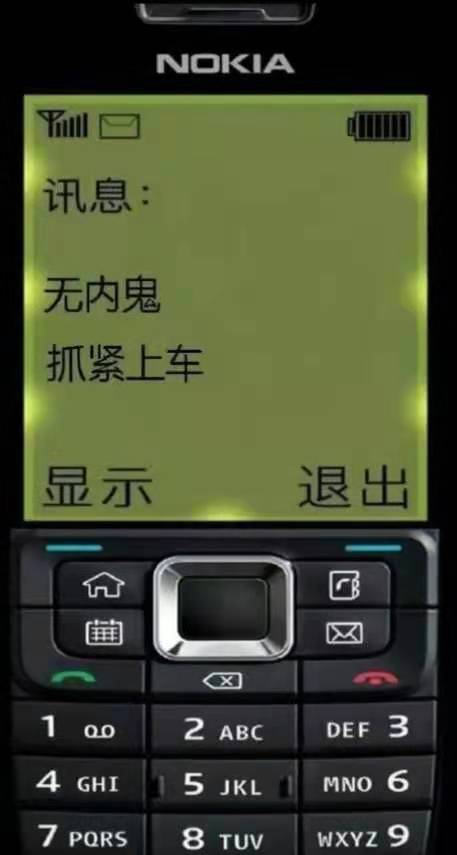记录--用three.js渲染真实的下雨效果
这里给大家分享我在网上总结出来的一些知识,希望对大家有所帮助
建模
首先我们需要一些贴图素材
贴图素材一般可以在3dtextures网站上找到,这里我找了2份,包含了墙的法线贴图和潮湿地面的法线、透明度、粗糙度贴图
通过kokomi.AssetManager将贴图素材一次性全部加载出来,将它们应用到Mesh上,加上基本的环境光照,即可完成最基本的建模
1 2 3 4 5 6 7 8 9 10 11 12 13 14 15 16 17 18 19 20 21 22 23 24 25 26 27 28 29 30 31 32 33 34 35 36 37 38 39 40 41 42 | // 光照const pointLight1 = new THREE.PointLight(config.color, 0.5, 17, 0.8);pointLight1.position.set(0, 2, 0);this.scene.add(pointLight1);...// 网格const aspTex = am.items["asphalt-normal"];aspTex.rotation = THREE.MathUtils.degToRad(90);aspTex.wrapS = aspTex.wrapT = THREE.RepeatWrapping;aspTex.repeat.set(5, 8);const wallMat = new THREE.MeshPhongMaterial({ color: new THREE.Color("#111111"), normalMap: aspTex, normalScale: new THREE.Vector2(0.5, 0.5), shininess: 200,});const wall = new THREE.Mesh(new THREE.BoxGeometry(25, 20, 0.5), wallMat);this.scene.add(wall);wall.position.y = 10;wall.position.z = -10.3;...// 文字const t3d = new kokomi.Text3D(this, config.text, font, { size: 3, height: 0.2, curveSegments: 120, bevelEnabled: false,});t3d.mesh.geometry.center();const tm = new THREE.Mesh( t3d.mesh.geometry, new THREE.MeshBasicMaterial({ color: config.color, }));this.scene.add(tm);tm.position.y = 1.54; |

积水地面
地面上的积水能反射出周围的景色,因此我们将选用kokomi.Reflector来实现反射效果
1 2 3 | const mirror = new kokomi.Reflector(new THREE.PlaneGeometry(25, 100));mirror.position.z = -25;mirror.rotation.x = -Math.PI / 2; |

普通的反射器仅仅是一面镜子,因此我们要自定义反射器的Shader
涟漪效果
之前逛shadertoy时看到了一个很棒的涟漪特效,就直接拿来用了
1 2 3 4 5 6 7 8 9 10 11 12 13 14 15 16 17 18 19 20 21 22 23 24 25 26 27 28 29 30 31 32 33 34 35 36 37 38 39 40 41 42 43 44 45 46 47 48 49 50 51 52 53 54 55 56 57 58 | // https://www.shadertoy.com/view/4djSRWfloat hash12(vec2 p){ vec3 p3=fract(vec3(p.xyx)*.1031); p3+=dot(p3,p3.yzx+19.19); return fract((p3.x+p3.y)*p3.z);}vec2 hash22(vec2 p){ vec3 p3=fract(vec3(p.xyx)*vec3(.1031,.1030,.0973)); p3+=dot(p3,p3.yzx+19.19); return fract((p3.xx+p3.yz)*p3.zy);}// https://gist.github.com/companje/29408948f1e8be54dd5733a74ca49bb9float map(float value,float min1,float max1,float min2,float max2){ return min2+(value-min1)*(max2-min2)/(max1-min1);}vec2 rippleUv=75.*p*uTexScale;vec2 p0=floor(rippleUv);float rainStrength=map(uRainCount,0.,10000.,3.,.5);if(rainStrength==3.){ rainStrength=50.;}vec2 circles=vec2(0.);for(int j=-MAX_RADIUS;j<=MAX_RADIUS;++j){ for(int i=-MAX_RADIUS;i<=MAX_RADIUS;++i) { vec2 pi=p0+vec2(i,j); #if DOUBLE_HASH vec2 hsh=hash22(pi); #else vec2 hsh=pi; #endif vec2 p=pi+hash22(hsh); float t=fract(.8*iTime+hash12(hsh)); vec2 v=p-rippleUv; float d=length(v)-(float(MAX_RADIUS)+1.)*t+(rainStrength*.1*t); float h=1e-3; float d1=d-h; float d2=d+h; float p1=sin(31.*d1)*smoothstep(-.6,-.3,d1)*smoothstep(0.,-.3,d1); float p2=sin(31.*d2)*smoothstep(-.6,-.3,d2)*smoothstep(0.,-.3,d2); circles+=.5*normalize(v)*((p2-p1)/(2.*h)*(1.-t)*(1.-t)); }}circles/=float((MAX_RADIUS*2+1)*(MAX_RADIUS*2+1));float intensity=.05*floorOpacity;vec3 n=vec3(circles,sqrt(1.-dot(circles,circles)));vec2 rainUv=intensity*n.xy; |

与地面结合
光有涟漪效果也不够,要将它与地面的贴图相结合起来
这里采用了自定义mipmap技术,利用kokomi.PackedMipMapGenerator生成了多个贴图的mipmap
自定义mipmap除了能捆绑贴图外,还有个好处就是可以动态控制贴图的模糊程度
1 2 3 4 5 6 7 | const mipmapper = new kokomi.PackedMipMapGenerator();const mirrorFBO = mirror.getRenderTarget();const mipmapFBO = new kokomi.FBO(this);mirror.material.uniforms.tDiffuse.value = mipmapFBO.rt.texture;this.update(() => { mipmapper.update(mirrorFBO.texture, mipmapFBO.rt, this.renderer);}); |
1 2 3 4 5 6 7 8 9 10 11 12 13 | vec2 p=vUv;vec2 texUv=p*uTexScale;texUv+=uTexOffset;float floorOpacity=texture(uOpacityTexture,texUv).r;vec3 floorNormal=texture(uNormalTexture,texUv).rgb*2.-1.;floorNormal=normalize(floorNormal);float roughness=texture(uRoughnessTexture,texUv).r;vec2 finalUv=reflectionUv+floorNormal.xy*uDistortionAmount-rainUv;float level=roughness*uBlurStrength;vec3 col=packedTexture2DLOD(tDiffuse,finalUv,level,uMipmapTextureSize).rgb; |
下雨动画
生成雨滴
雨滴数量会很多,因此要用到THREE.InstancedMesh来生成实例化网格对象
1 2 3 4 5 6 7 8 9 10 11 12 13 14 15 16 17 | const rain = new THREE.InstancedMesh(new THREE.PlaneGeometry(), rainMat, count);rain.instanceMatrix.needsUpdate = true;const dummy = new THREE.Object3D();for (let i = 0; i < rain.count; i++) { dummy.position.set( THREE.MathUtils.randFloat(-10, 10), 0, THREE.MathUtils.randFloat(-20, 10) ); dummy.scale.set(0.03, THREE.MathUtils.randFloat(0.3, 0.5), 0.03); dummy.updateMatrix(); rain.setMatrixAt(i, dummy.matrix);}rain.rotation.set(-0.1, 0, 0.1);rain.position.set(0, 4, 4); |
这里要注意一点:雨滴的方向是始终朝向用户的,为了达成这点就要用billboard方案来实现
1 2 3 4 5 6 7 8 9 | vec3 billboard(vec3 v,mat4 view){ vec3 up=vec3(view[0][1],view[1][1],view[2][1]); vec3 right=vec3(view[0][0],view[1][0],view[2][0]); vec3 pos=right*v.x+up*v.y; return pos;}vec3 billboardPos=billboard(transformed,modelViewMatrix);transformed=billboardPos; |

下落动画
我们可以给雨滴赋予随机的高度和速度attribute,并在顶点着色器中让它动起来
1 2 3 4 5 6 7 8 9 10 11 12 13 14 15 16 17 18 | const progressArr = [];const speedArr = [];for (let i = 0; i < rain.count; i++) { ... progressArr.push(Math.random()); speedArr.push(dummy.scale.y * 10);}rain.geometry.setAttribute( "aProgress", new THREE.InstancedBufferAttribute(new Float32Array(progressArr), 1));rain.geometry.setAttribute( "aSpeed", new THREE.InstancedBufferAttribute(new Float32Array(speedArr), 1)); |
1 2 3 4 5 6 7 8 9 10 11 12 13 | attribute float aProgress;attribute float aSpeed;uniform float uSpeed;uniform float uHeightRange;vec3 distort(vec3 p){ float y=mod(aProgress-iTime*aSpeed*.25*uSpeed,1.)*uHeightRange-(uHeightRange*.5); p.y+=y; return p;}transformed=distort(transformed); |
反射效果
创建背景的离屏渲染FBO,将其作为反射的主要材质
1 2 3 4 5 6 7 8 9 10 11 12 13 14 15 | const bgFBO = new kokomi.FBO(this, { width: window.innerWidth * 0.1, height: window.innerHeight * 0.1,});rainMat.uniforms.uBgRt.value = bgFBO.rt.texture;const fboCamera = this.camera.clone();this.update(() => { rain.visible = false; this.renderer.setRenderTarget(bgFBO.rt); this.renderer.render(this.scene, fboCamera); this.renderer.setRenderTarget(null); rain.visible = true;}); |
在顶点着色器中获取屏幕空间vScreenspace
1 2 3 4 5 6 7 8 9 | // https://github.com/Samsy/glsl-screenspacevec2 screenspace(mat4 projectionmatrix,mat4 modelviewmatrix,vec3 position){ vec4 temp=projectionmatrix*modelviewmatrix*vec4(position,1.); temp.xyz/=temp.w; temp.xy=(.5)+(temp.xy)*.5; return temp.xy;}vScreenspace=screenspace(projectionMatrix,modelViewMatrix,transformed); |
在片元着色器中采样反射材质
1 2 3 4 5 6 7 8 9 10 11 12 13 14 15 16 17 18 19 20 21 22 23 24 25 26 27 28 29 | uniform sampler2D uNormalTexture;uniform sampler2D uBgRt;uniform float uRefraction;uniform float uBaseBrightness;varying vec2 vScreenspace;void main(){ vec2 p=vUv; vec4 normalColor=texture(uNormalTexture,p); if(normalColor.a<.5){ discard; } vec3 normal=normalize(normalColor.rgb); vec2 bgUv=vScreenspace+normal.xy*uRefraction; vec4 bgColor=texture(uBgRt,bgUv); float brightness=uBaseBrightness*pow(normal.b,10.); vec3 col=bgColor.rgb+vec3(brightness); col=vec3(p,0.); gl_FragColor=vec4(col,1.);} |
这里有一点要注意:积水地面中要把雨滴的反射去掉,不然会看着很乱
1 | rainFloor.mirror.ignoreObjects.push(rain); |
灯光闪烁
用setInterval来间歇地设置文字和灯光材质的颜色即可
1 2 3 4 5 6 7 8 9 10 11 12 13 14 15 16 17 18 19 20 21 22 23 24 25 26 27 28 29 | // flickerconst turnOffLight = () => { tm.material.color.copy(new THREE.Color("black")); pointLight1.color.copy(new THREE.Color("black"));};const turnOnLight = () => { tm.material.color.copy(new THREE.Color(config.color)); pointLight1.color.copy(new THREE.Color(config.color));};let flickerTimer = null;const flicker = () => { flickerTimer = setInterval(async () => { const rate = Math.random(); if (rate < 0.5) { turnOffLight(); await kokomi.sleep(200 * Math.random()); turnOnLight(); await kokomi.sleep(200 * Math.random()); turnOffLight(); await kokomi.sleep(200 * Math.random()); turnOnLight(); } }, 3000);};flicker(); |
后期处理
为了让文字灯光看上去更加明亮,可以用Bloom滤镜来照亮文字
由于后期处理中原先renderer的抗锯齿会失效,故用SMAA滤镜来实现抗锯齿
1 2 3 4 5 6 7 8 9 10 11 12 13 14 15 16 17 18 19 | // postprocessingconst composer = new POSTPROCESSING.EffectComposer(this.renderer);this.composer = composer;composer.addPass(new POSTPROCESSING.RenderPass(this.scene, this.camera));// bloomconst bloom = new POSTPROCESSING.BloomEffect({ luminanceThreshold: 0.4, luminanceSmoothing: 0, mipmapBlur: true, intensity: 2, radius: 0.4,});composer.addPass(new POSTPROCESSING.EffectPass(this.camera, bloom));// antialiasingconst smaa = new POSTPROCESSING.SMAAEffect();composer.addPass(new POSTPROCESSING.EffectPass(this.camera, smaa)); |
待优化
效果算是基本实现了,但也有很多待优化的点
- 添加现实中的雨声
- 实现更棒的相机交互
- 添加更多的物体





【推荐】编程新体验,更懂你的AI,立即体验豆包MarsCode编程助手
【推荐】凌霞软件回馈社区,博客园 & 1Panel & Halo 联合会员上线
【推荐】抖音旗下AI助手豆包,你的智能百科全书,全免费不限次数
【推荐】博客园社区专享云产品让利特惠,阿里云新客6.5折上折
【推荐】轻量又高性能的 SSH 工具 IShell:AI 加持,快人一步
· CSnakes vs Python.NET:高效嵌入与灵活互通的跨语言方案对比
· 【.NET】调用本地 Deepseek 模型
· Plotly.NET 一个为 .NET 打造的强大开源交互式图表库
· 上周热点回顾(2.17-2.23)
· 如何使用 Uni-app 实现视频聊天(源码,支持安卓、iOS)